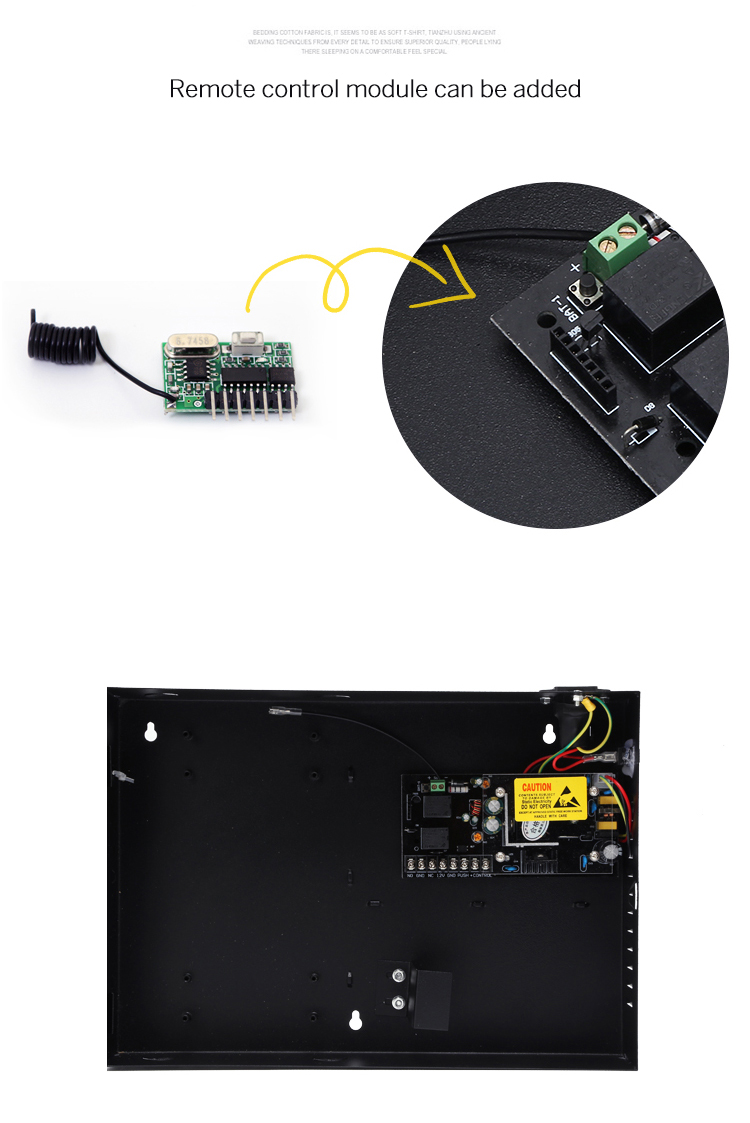Is the TCP/IP Access Control Panel software Compatible With Other Devices Or Systems?
TCP/IP Access Control Panel software updates are typically handled through a systematic process to address security vulnerabilities, enhance functionality, and ensure overall system performance. Here's an overview of how these updates are managed:
Regular Updates:
Scheduled Releases: RJ45 Access control panel software providers often follow a scheduled release cycle. Regular updates are planned and released at specific intervals to address security vulnerabilities, bugs, and to introduce new features or improvements.
Security Updates:
Patch Releases: In response to identified security vulnerabilities, patches or security updates are released promptly. These updates are crucial for maintaining the security of the access control system by addressing potential risks.
Functionality Improvements:
Feature Enhancements: Updates may include improvements to existing features or the introduction of new functionalities based on user feedback, technological advancements, or industry standards.
Maintenance Process:
Notification: Users are typically notified in advance about upcoming updates. Notifications may include information about the purpose of the update, expected downtime (if any), and any actions users need to take.
Automated Updates: Some systems support automated updates, where the software automatically downloads and installs updates in the background. This minimizes the effort required from users but may still require a system restart.
Manual Updates: In some cases, users may need to initiate the update process manually. This is common in enterprise settings where administrators have more control over the update schedule.
Troubleshooting and Support:
Documentation: Access control software providers usually offer documentation that accompanies updates. This documentation outlines the changes made, any new features introduced, and instructions for troubleshooting common issues.
Customer Support: A reliable customer support system is in place to assist users with any challenges they may encounter during the update process. This can include live chat, email support, or a dedicated support portal.
Community Forums: Users often participate in community forums where they can share experiences, ask questions, and seek advice from other users or representatives from the software provider.
Rollback Options: In the event that an update causes unexpected issues, some systems provide rollback options. Users can revert to a previous version of the software until any problems are resolved.

By following these practices, Web based access control software providers aim to ensure that their systems are secure, up-to-date, and equipped with the latest features to meet the evolving needs of users. Users are encouraged to stay informed about updates, implement them in a timely manner, and leverage available support resources if needed.
User is the software compatible with other devices or systems? Can it seamlessly integrate with existing technology infrastructure without causing conflicts or issues?
The compatibility of access control panel software with other devices or systems is a crucial consideration to ensure seamless integration into existing technology infrastructure. Here's how compatibility is typically addressed:
Standard Protocols:
Access control software often adheres to standard communication protocols (e.g., TCP/IP) to facilitate interoperability with a wide range of devices and systems.
Open APIs (Application Programming Interfaces):
Many access control systems provide open APIs, enabling integration with third-party devices and software applications. This allows for a more flexible and customizable integration process.
Hardware Compatibility:
Access control software is designed to work with a variety of hardware components such as card readers, biometric devices, and door controllers. Compatibility lists are usually provided by the software vendor.
Database Integration:
The software may support integration with existing databases or user directories, allowing for the seamless import and synchronization of user information.
Multi-Platform Support:
Access control software is often developed to be compatible with various operating systems (e.g., Windows, Linux) to accommodate different IT environments.
Scalability:
Compatibility considerations also extend to scalability. The software should be capable of scaling to accommodate the growing needs of an organization without causing conflicts.
Testing and Certification:
Software vendors often conduct testing and obtain certifications to ensure compatibility with specific hardware or systems. This information is usually provided to users for reference.
Documentation and Guidelines:
Detailed documentation and guidelines are typically available to assist users in the integration process. This may include step-by-step instructions, compatibility matrices, and troubleshooting guides.